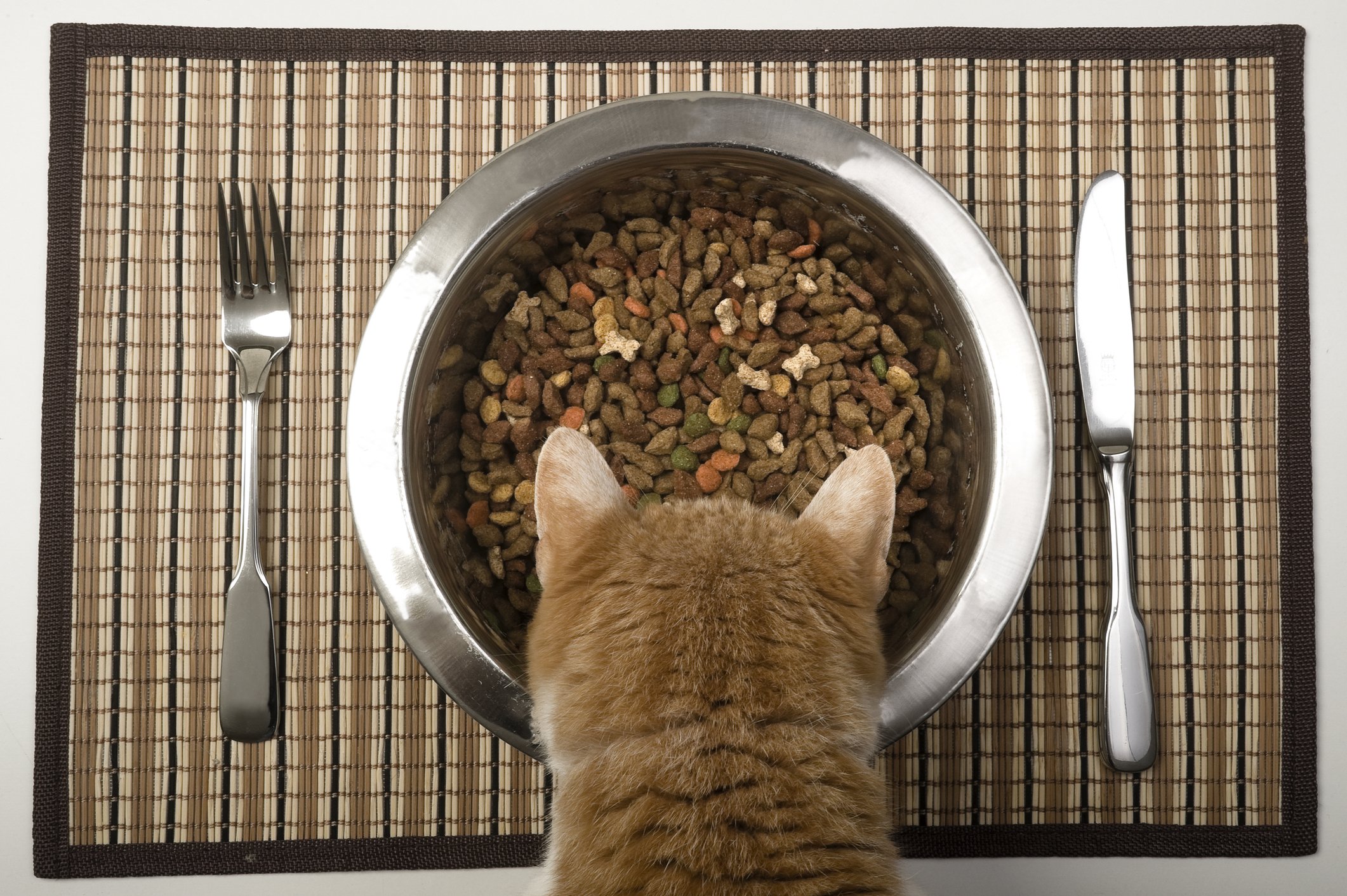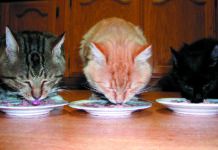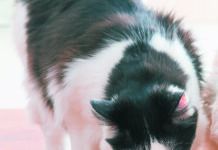In my feline-only veterinary practice in New York City, not a single day goes by without a client asking me: What is the best diet for my healthy cat? These days, it is becoming increasingly more difficult to answer this (seemingly) simple question. Many people feel that cats should be fed canned food only, and that dry food is extremely unhealthy for them.
Other people feel that the composition of the food is much more important than the form (canned vs. dry), and are convinced that low carbohydrate (“grain-free”) diets are the only ones suitable for true carnivores such as the cat. Still others shun commercial diets altogether and are adamant that homemade “raw” diets are the only way to go.
© Iakov Fillimonov | Dreamstime


A significantly easier question to answer is what to feed a cat that is unhealthy. As veterinary medicine has progressed, the use of therapeutic diets has played an increasingly important role in the management of many common health conditions. The number of companies that manufacture therapeutic diets has grown — as has the variety of diets that they offer. These diets can help manage a remarkable number of ailments (see sidebar on page 12). In this article, I’ll touch on the common conditions that I see in my practice, and how these diets help to effectively manage these disorders.
Common conditions
Urinary tract issues are a common reason for bringing a cat to the veterinarian. Increased frequency of urination, straining to urinate, urinating in inappropriate places and the presence of blood in the urine are the most obvious signs of feline lower urinary tract disease (FLUTD).
The common causes of FLUTD are urinary tract infections (UTIs), crystals in the urine, bladder stones and stress. UTIs are best treated with antibiotics. Urinary crystals can irritate the lining of the bladder, leading to inflammation and signs of discomfort. Increased crystals in the urine are especially worrisome in male cats, as they are at increased risk of life-threatening urinary obstructions if the crystals coalesce and form “sand” — which can form a plug in the urethra and obstruct urine flow.
Therefore, cats with excessive urinary crystals should be fed a therapeutic diet that is restricted in the amount of minerals that comprise these crystals. These diets also adjust the pH of the urine to a level that makes urinary crystals unlikely to form.
If X-rays reveal the presence of a bladder stone, cats can be fed a therapeutic diet that is designed to dissolve the stone over the course of a few weeks. However, this only works for stones comprised of the mineral struvite; stones composed of calcium oxalate cannot be dissolved with diet and will require surgical removal.
© Lio2012 | Dreamstime


Cats diagnosed with FLUTD that is not caused by UTI, crystals or bladder stones are said to have “idiopathic cystitis” — inflammation of the bladder for no apparent cause. Unfortunately, this condition can be challenging to treat. Recent research suggests that stress plays a significant role in the development of idiopathic cystitis. There are now therapeutic urinary diets that contain a milk protein that has been shown to reduce stress in cats, thereby helping treat and prevent stress-related bladder inflammation.
Chronic kidney disease (CKD) often develops in cats as they become geriatric. As the kidneys gradually lose their ability to filter toxins from the bloodstream, cats will show signs of illness such as increased thirst and urination, decreased appetite, weight loss and nausea/vomiting.
Owners need to realize that it is difficult or impossible to improve a cat’s kidney function. Once CKD is diagnosed, the focus is on slowing the progression of the disease. This is achieved through monitoring the level of protein in the urine, controlling the cat’s blood pressure and preventing excessive potassium loss. The cornerstone of CKD treatment, however, is the feeding of a diet that is restricted in the amounts of protein and phosphorus. It has been conclusively shown that cats fed these diets feel better and live longer than cats that don’t (or won’t) eat them.
Diabetes is one of the most common glandular disorders of cats. Male cats are one-and-a-half times more likely than female cats to get diabetes. Obesity is another predisposing factor. The common clinical signs of diabetes are increased thirst, excessive urination, weight loss despite a ravenous appetite and weakness/abnormal gait in the hind limbs.
Diet to help diabetes
Treatment of diabetes involves giving cats twice-daily insulin injections. Although it is possible to regulate diabetes regardless of diet, cats that are fed diets that are high in protein and low in carbohydrates tend to do much better — often requiring less insulin to control their diabetes. In fact, some diabetic cats can be managed by diet alone and may not require any insulin at all.
As cats age, it is not uncommon for arthritis to develop. A study several years ago revealed that 90 percent of cats older than 10 years display radiographic signs of arthritis. Luckily, most cats age gracefully — and most do not require pain medication to manage their arthritis. However, they can benefit from supplements such as glucosamine and chondroitin, the same supplements that arthritic humans take.
These supplements can be given to cats directly, or they can be added to the food. Cats, however, do not like to be medicated, and being notoriously fussy, many cats can detect supplements added to their meals and will not eat the doctored food. There are now therapeutic diets in which the glucosamine and chondroitin are already incorporated into the diet. If the cat finds the food palatable, it is an easier way to administer the supplements and improve the mobility of arthritic cats.
Hyperthyroidism is a glandular disorder in which the thyroid gland in the neck produces excessive amounts of thyroxine (T4), the main thyroid hormone. It is a disease of older cats (the average age at diagnosis being 13 to 14 years).
The increased level of T4 causes an increase in the cat’s metabolism, and cats begin to lose weight. The body tries to compensate by taking in more food, but the cats usually can’t keep up, and they lose weight despite having a ravenous appetite.
Other clinical signs sometimes seen in hyperthyroidism can include excessive thirst and urination, vomiting, diarrhea, restlessness/hyperactivity, panting, excessive shedding and increased vocalization (especially at night). Fortunately, hyperthyroidism is very treatable. Surgical removal of the thyroid gland is curative, although this is rarely done, as the availability of a safer and more effective option (radioactive iodine treatment) has become more widespread.
Radioactive iodine therapy is expensive, however, and a less costly (and more common) treatment option is the administration of anti-thyroid medication. The medication (methimazole) is very effective, but it must be given twice daily for the rest of the cat’s life.
Diet for hyperthyroidism
Several years ago, a well-known therapeutic diet manufacturer marketed the first diet designed to treat feline hyperthyroidism. The diet is extremely restricted in the levels of iodine (without iodine, the thyroid cannot synthesize excessive T4). The diet has proven effective as long as the cat eats absolutely nothing else but the prescription diet. Any cat treats or human foods — no matter how small the amount — may affect the efficacy of the diet in controlling the hyperthyroidism. If cat owners can ignore their cat’s demands and resist the urge to feed snacks and treats — and if the cat finds the food palatable — the hyperthyroidism can be completely controlled with diet alone.
Fortunately, medication and surgery are no longer the only options for the treatment of illnesses in cats. Therapeutic diets have become an important component in the therapy of complex medical issues in cats — in some instances sparing the cat the need for surgery (for example, bladder stone removal), or controlling the illness completely, precluding the need for daily medication (for example, diabetes and hyperthyroidism).
It is exciting for veterinarians to think of the other illnesses that could potentially be addressed as advances in nutritional research continue to develop. — Arnold Plotnick, DVM, DACVIM




